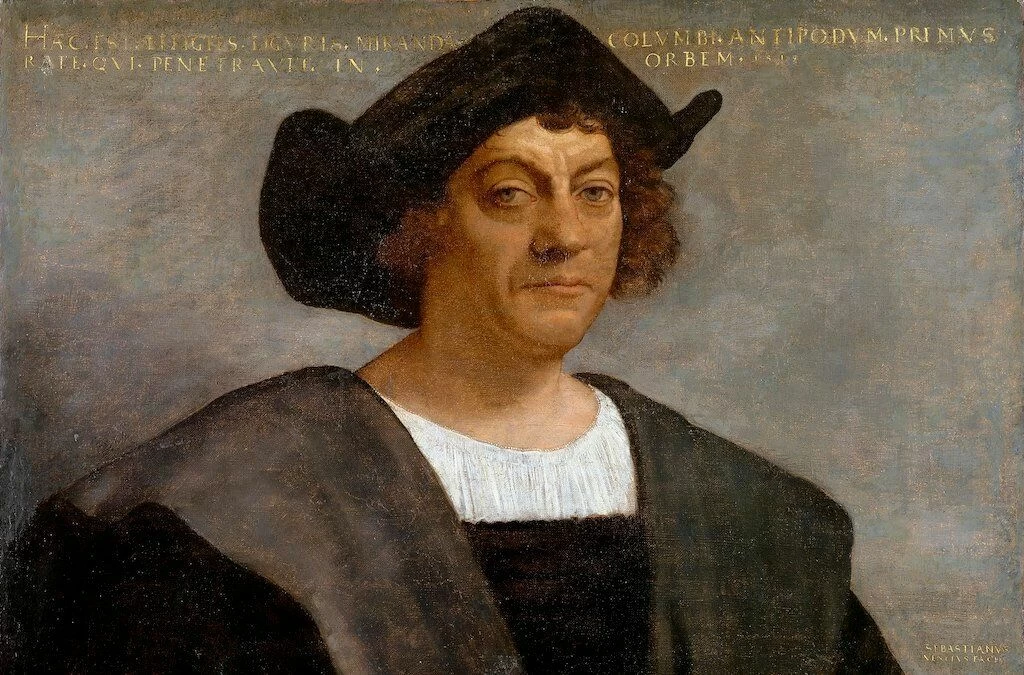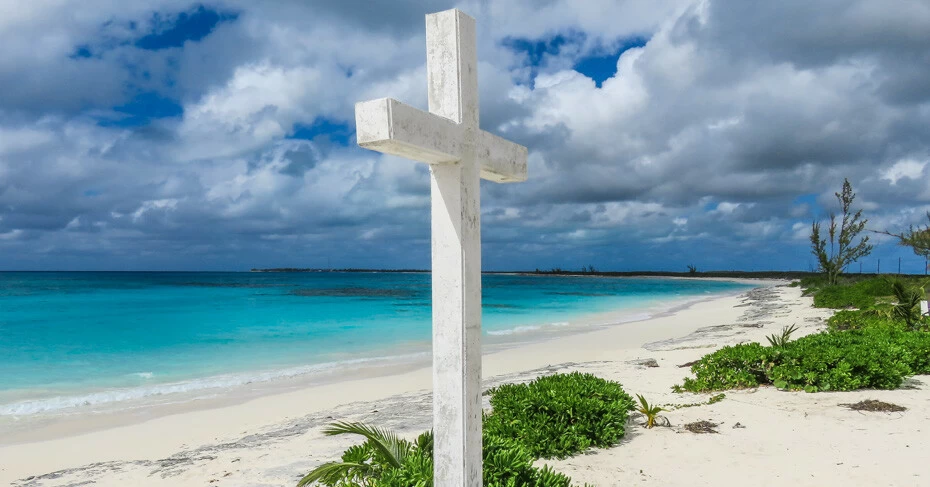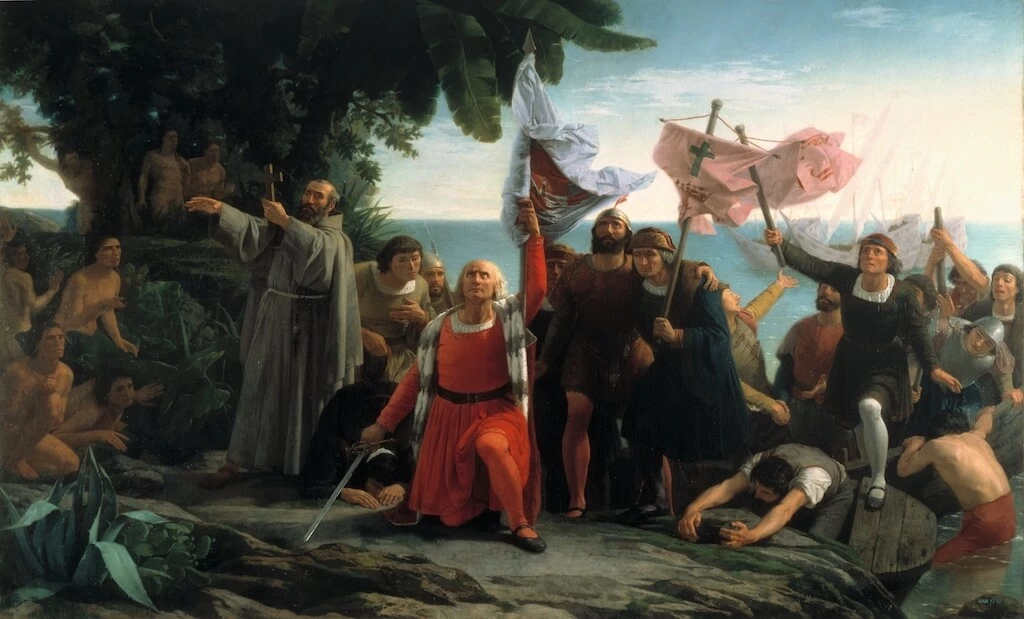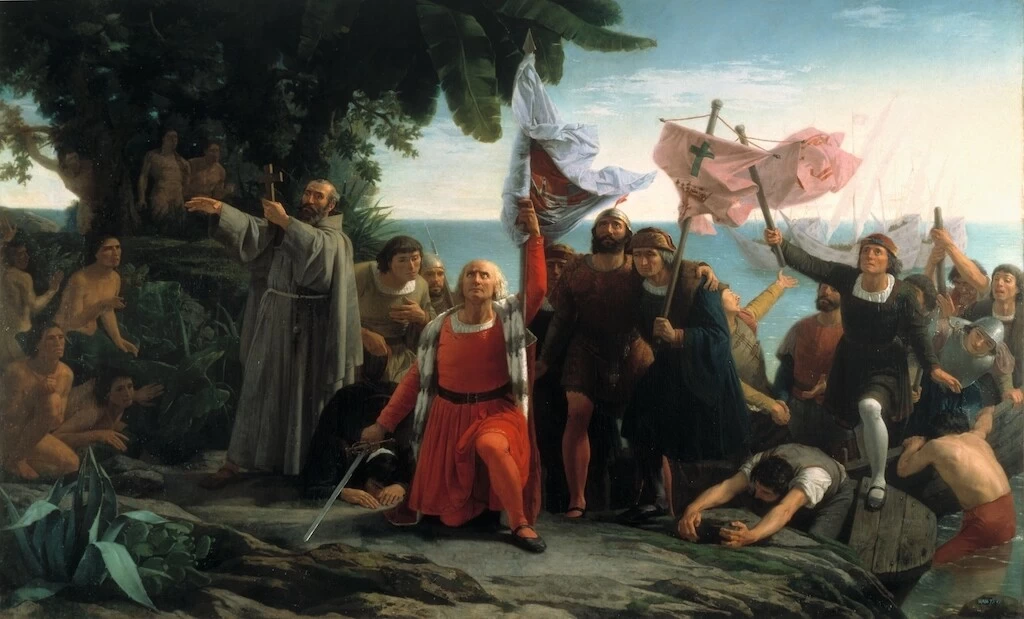Who Discovered America First

Scholars have tried to follow Columbus’s written sailing log to arrive at a conclusion. Some have even tried to track the voyage backward from a specific island to the Canary Islands, where his trek across the Atlantic began.
Diary of Christopher Columbus’ Landing
There is a diary of Columbus that one would think could provide a definitive answer. Unfortunately, only about 20% of the manuscript was actually written by Columbus. The remaining text is probably written by Bartolome de Las Casas, a Dominican friar some twenty years later.
The description in the diary of that initial island is also controversial. The documentation of agricultural features of the island are quite vague and could apply to most of the islands in the area. An example is “…they saw trees, very green, many streams of water, and diverse sorts of fruits.“
One key phrase: “una laguna en medio muy grande” could, according to historian Paul Aron, mean either a large lake in the middle of an island (of which some of the candidates have) or a large lagoon in the middle of the shoreline.

In the diary, Columbus clearly states that he landed on the island he named “San Salvador” and there is indeed an island called San Salvador in the Bahamas. Case closed? Unfortunately not. That island was only named “San Salvador” in the 1920s. Prior to that, it was known as “Watling’s Island.” However, San Salvador is one of the most likely islands where first contact was made.
Locals Called It Guanahani
The Taino Indian natives welcomed Columbus and his landing crew. They all exchanged gifts with one another during the first meeting. Columbus gave red hats and glass beads. Afterward, the natives provided parrots, balls of cotton thread and spears. None of the natives wore clothing, and only one young female was initially seen. But in this historic meeting, the Taino somehow communicated to Columbus that their island is called Guanahani.
According to Columbus’ journal, a reef encircled most of the island:
They called out to us loudly to come to land, but I was apprehensive on account of a reef of rocks, which surrounds the whole island, although within there is a depth of water and room sufficient for all the ships of Christendom, with a very narrow entrance.
National Geographic Study on the Landing Site
For the 500th anniversary of the landing, the National Geographic Society funded a one million dollar study that proposed the island of Samana Cay as the landing site. However, this was not accepted by many scholars. Alternative islands such as the Grand Turk, the Plana Cays, Mayaguana, and Conception Island still have their supporters.

The only one who never joined in this debate was Columbus himself. From what we know, even as new explorers were picking over his discovery and agreeing it was new land to be conquered, Columbus insisted until his death that he had landed on islands very near Asia.
It may never be possible to re-trace Columbus’s voyage to answer the question of where did Columbus land. At least not with certainty. But, that question is almost insignificant, however, compared to the global effect the discovery had on both sides of the Atlantic.
